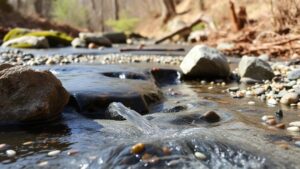Exploring the Pros and Cons of Recirculating Sluices for Gold Recovery
Exploring the Pros and Cons of Recirculating Sluices for Gold Recovery
Recirculating sluices are an innovative method utilized in the field of gold prospecting that offers both advantages and challenges. These systems are increasingly popular among hobbyists and professionals alike for their efficiency and portability. This article explores the various pros and cons of recirculating sluices, providing insight into their operational mechanisms and effectiveness in gold recovery.
How Recirculating Sluices Work
Recirculating sluices operate by using a water recirculation system to separate gold from sediment. Instead of using a constant flow of fresh water, which can be scarce in many regions, these sluices pump water from a reservoir back into the sluice. The process involves several key components:
- Sluicing Chamber: This is where the material is introduced. As water flows through, it creates a current that helps separate heavier materials like gold from lighter debris.
- Gravel Box: Material is added here, which is then washed to facilitate the separation process.
- Collection Tray: Here, the gold settles out due to density differences, allowing for easy recovery.
Pros of Recirculating Sluices
Recirculating sluices offer several distinct advantages that contribute to their growing popularity among gold prospectors:
- Water Conservation: In arid or drought-prone areas, recirculating sluices minimize the need for continuous water supply, making them an eco-friendlier option.
- Portability: Most recirculating sluices are lightweight and easy to transport, allowing users to prospect in remote locations.
- Cost-Effective: By eliminating the need for extensive water supplies, they lower operational costs in the long term.
- Enhanced Recovery Rates: These systems can improve gold recovery rates due to their ability to trap finer gold particles that may be missed by traditional methods.
Cons of Recirculating Sluices
Despite their advantages, recirculating sluices come with certain drawbacks that potential users should consider:
- Limited Capacity: Recirculating sluices may not handle large volumes of material effectively, which can be a limitation in high-yield areas.
- Frequent Maintenance: The water system requires regular cleaning and maintenance to prevent clogs and maintain efficiency.
- Initial Setup Costs: While long-term costs are lower, the initial investment in a quality recirculating sluice setup can be significant.
- Dependence on Electricity: Many models require a power source for the pump, which can limit their usability in remote areas.
Real-World Applications and Case Studies
To understand the effectiveness of recirculating sluices, it is helpful to look at real-world applications:
- Hobby Prospectors: Many hobbyists have reported success with portable recirculating sluices on weekend outings, highlighting their ease of use and effectiveness in recovering fine gold.
- Commercial Operations: Some small-scale mining operations have integrated recirculating systems into their workflow to optimize fine gold recovery without the environmental impact of traditional methods.
Actionable Takeaways
For those considering purchasing a recirculating sluice, here are some actionable takeaways:
- Assess your local water availability and topography to determine if a recirculating sluice is suitable for your needs.
- Invest in a quality unit that has proven efficiency and durability.
- Stay informed about maintenance requirements and ensure you have the necessary tools for upkeep.
- Connect with other users and prospectors to share tips and strategies for maximizing recovery rates.
To wrap up, recirculating sluices represent a modern approach to gold recovery that balances efficiency, portability, and environmental responsibility. Understanding both their strengths and weaknesses will help prospectors make informed choices that align with their specific gold recovery goals.


